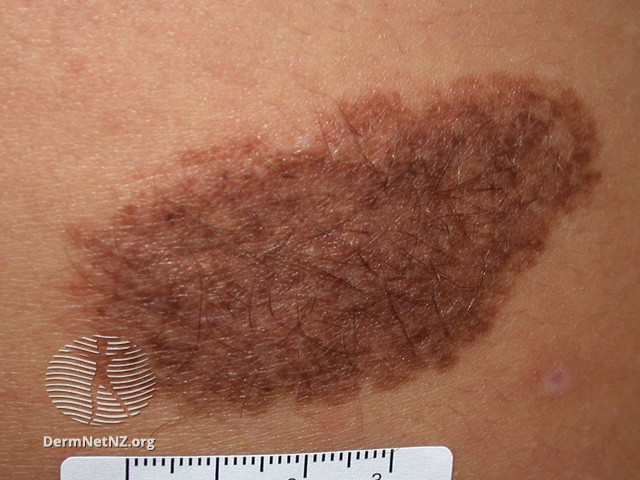A new RNA silencing therapy may alleviate giant moles seen in congenital melanocytic naevus syndrome (CMN), potentially reducing cancer risk among people with this condition.
Kids with CMN are born with up to 80% of their body covered in big, painful or itchy moles. These moles can sometimes develop into melanoma.
Researchers at the Francis Crick Institute, UCL Great Ormond Street Institute for Child Health, and Great Ormond Street Hospital for Children (GOSH) used silencing RNA to silence the NRAS gene, which is mutated in the cells in these moles, in cells in a dish and in mice. RAS genes such as NRAS, when mutated, can cause moles, and can predispose to cancer.
“This results suggest that the treatment in future could potentially reverse moles in people, however more testing will be needed before we can give it to patients.”
–Veronica Kinsler
The team used a genetic therapy called silencing RNA, which silences the mutated NRAS in mole skin cells. The therapy was delivered in special particles directly to mole cells.
They gave injections containing the therapy to mice with CMN, which reduced the silenced the NRAS gene after just 48 hours. They also tested it in cells and whole skin sections from children with CMN. Silencing the gene triggered the mole cells to self-destruct.
“These results are very exciting, as not only does the genetic therapy trigger self-destruction of the mole cells in the lab, but we have managed to deliver it into the skin in mice,” says Veronica Kinsler, Principal Group Leader of the Mosaicism and Precision Medicine Laboratory at the Crick, Professor of Paediatric Dermatology and Dermatogenetics at GOSH/UCL, and National Institute for Health and Care Research (NIHR) Research Professor, in a news release. “This results suggest that the treatment in future could potentially reverse moles in people, however more testing will be needed before we can give it to patients.”
The study appears in the Journal of Investigate Dermatology.
PHOTO CREDIT: DermNet


